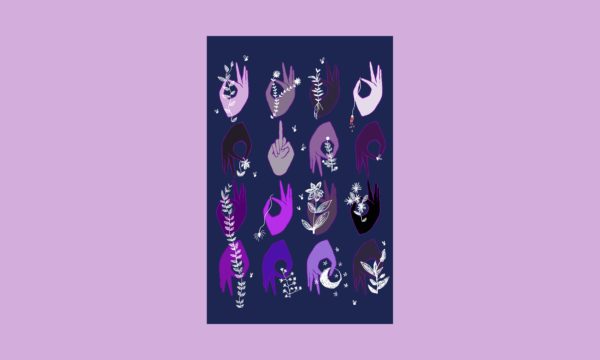Visual Arts student Taryn Walker on designing our International Women’s Day cover

Taryn Walker’s International Women’s Day cover
Creating the cover for the International Women’s Day issue of the Martlet was quite the challenge. For me, it was important to present an image of femininity and womanhood that was both diverse and inclusive. Specifically, I wanted to celebrate the strength, resilience, and beauty of women without backing anyone into a corner in any particular way.
Some of the hands enact gestures that represent different manifestations of femininity: androgyny, defiance, the goddess, etc. I have purposefully drawn many of the hands in ambiguous way, as to leave room for individuals to find themselves in the drawings and write themselves into the ongoing narrative of what it means to be a woman.
A recurring motif in my work is the garden as a symbol. The garden is a forbidden and magical space, a space of growth and discovery that is equally sinister and beautiful. When I imagine the garden in relation to the characters in my work, they are either part of the garden or discovering it for the first time. As a symbol, the garden reminds me a lot of the art world and how it is still full of barriers and inequality if you are a woman. My experience of navigating the art world as a young woman filters a lot into my illustrative work and plants the seed for certain images.
Flies have also become a recurring symbol in my work. The meaning changes for me from drawing to drawing, but I like the idea of them being an invasive, incessant swarm.
One moment they can be an inconvenience or annoyance, the next they are repulsive or aggressive. Flies are also just a texture that I enjoy aesthetically. I have been using them for many years to balance compositions.
Despite motifs like the garden and flies being components in my work, it is important to me that the viewer does not let their imagination become hindered by a specific meaning or idea I have used as a starting point. I am interested in the tension created when the viewer is given a certain amount of information visually, but not enough for them to fully understand the narrative.
The art I create in my practice lives on the precipice of a story; it is anti-narrative, and it is symbolism without mythology. It is as if you have caught me in the middle of a conversation with an old friend (or enemy) and now you must fill in the blanks.
My art is meant to disorient the viewer. Where are you? Who are you? How do you fit into this narrative? Are you incredibly small or larger than life?
Let your knowledge of language guide you, but not hinder you as you navigate these tensions.
Taryn Walker is a fourth-year student in the Visual Arts Department at UVic. More of her work can be found at tarynwalkermedia.com or @twalkermedia on Instagram








